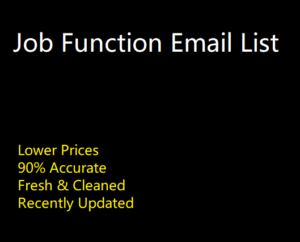In the dynamic world of business and employment, the function of a job description cannot be overstated. A job description serves as a fundamental tool that defines roles, responsibilities, and expectations for both employers and employees. It plays a crucial role in establishing a clear understanding of the position’s requirements and serves as a basis for recruitment, performance evaluation, and career development. This article delves into the multifaceted function of a job description, exploring its significance in fostering organizational efficiency, employee satisfaction, and overall success.
1. Defining Roles and Expectations:
A well-crafted job description outlines the specific tasks, duties, and responsibilities associated with a particular role. By precisely defining these parameters, employers ensure Nursing Homes Email List that candidates possess the necessary qualifications and skill sets. This clarity helps in attracting the right talent for the job, streamlining the recruitment process, and reducing the likelihood of miscommunication between the employer and potential employees.
2. Supporting Recruitment and Hiring:
When it comes to hiring new employees, job descriptions play a pivotal role. They serve as the primary source of information for prospective candidates, enabling them to determine if their skills align with the position’s requirements. Furthermore, clear job descriptions facilitate more targeted and relevant job advertisements, thus attracting candidates who are genuinely interested in and qualified for the role. Effective job descriptions contribute to a more efficient recruitment process, ultimately saving time and resources for both employers and applicants.
3. Enhancing Performance Management:
Job descriptions serve as a reference point for evaluating employee performance. By setting specific goals and expectations, employers can assess an employee’s accomplishments against the outlined responsibilities. Regular performance appraisals become more objective and B2C Fax meaningful when there is a standard to measure against. This, in turn, allows for better feedback, recognition of achievements, and identification of areas for improvement, fostering a culture of continuous growth and development.


